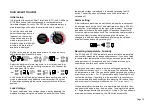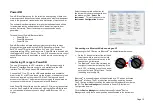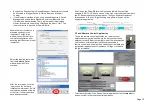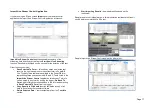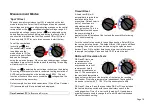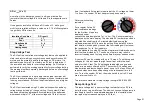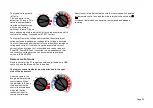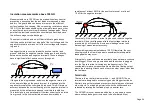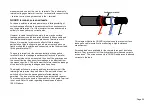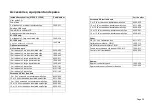
Page 19
Measurement Modes
‘Spot’ IR test
The spot insulation resistance test (IR) is selected on the test
mode rotary switch. Select the IR setting and then the required
test voltage using the preconfigured voltage ranges on the central
rotary switch or the
V
L
user settable/lockable voltage range. All
preconfigured voltage ranges, but not
V
L
, are adjustable using
up and down arrow buttons before and during the test, but their
use should be limited to the first 10 seconds of IR or IR(t) test.
Press and hold TEST for up to three seconds to start the test.
To set the user defined
lock voltage
V
L
,
turn
the central rotary switch
to settings and the
mode switch to IR. The
preset voltage will flash
and can be changed
using the up/down buttons. When the required maximum voltage
is displayed, press the OK button to save the setting. This setting
will remain until it is reset.
Whenever
V
L
is selected the set voltage is shown on the display.
The voltage lock is useful when, for example, testing insulation of
XLPE cables that should not be tested above 5000 V. The lock
function will ensure it does not exceed the
V
L
voltage within the
stated output voltage accuracy.
On test completion, insulation capacitance (C) and Time Constant
(TC) associated with it is calculated and displayed.
Time Constant (TC) = R
insulation
x C
insulation
Timed IR test
A timed test IR(t) will
automatically terminate an
insulation test after a
preset time. Default timer is
set to 1 minute and is
adjustable within the
settings function. This is a
useful feature which saves
the user watching the
display for the full duration of the test and the possibility of missing
the 1 minute reading.
Turn the central rotary switch to the settings position. Select IR(t) on
the test mode rotary switch. The default time of 1:00 minute will flash
prompting the user to select a new time using the up/down arrow
buttons. Press OK to set test duration and turn central rotary switch
to desired test voltage. Press and hold TEST to start the test.
DAR and PI Insulation Tests
DAR and PI tests are
measurements of
resistance over time
expressed as a ratio of
resistance at time t2
divided by resistance at
time t1. The assumption is
that insulation temperature
does not vary widely over the duration of the test so the resulting
DAR and/or PI value are temperature independent. Testing should
be done at or below 40 °C, 104 °F for this assumption to hold.
DAR and PI timers t1 and t2 are set when DAR or PI is selected on
the test mode rotary switch with the central rotary switch in the
settings position. Timer t1 is set first followed by t2. Up and down
arrow buttons are used to change the t1 and t2 default values and
OK confirms each setting.






